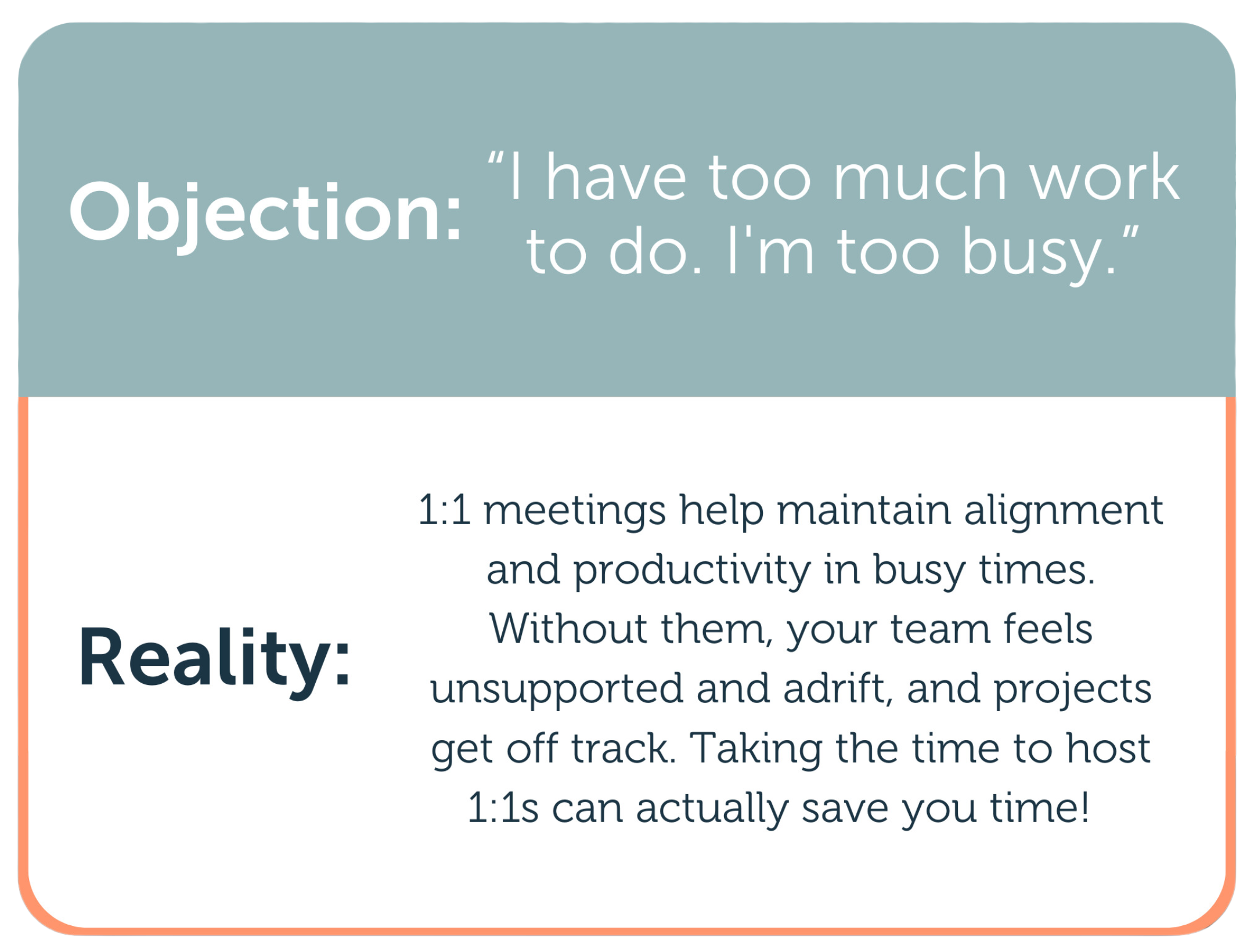Why Weekly 1:1 Meetings are Non-Negotiable—Plus, a Simple Template To Use
If we told you that there was one thing you could do as a leader that would strengthen your relationship with your team and keep work running smoothly, what would you say? We'd be willing to bet that you'd be pretty interested!
Well, this game-changing tool is something already on your radar: the weekly 1:1 meeting.
We can practically hear you sighing through the screen, so let's get straight into all the reasons why consistent 1:1s are hard. (And no judgment at all; we struggle with this ourselves.)
Why consistent 1:1s aren't happening
Here are the most common objections we hear, as well as our rebuttals based on years of experience. We've seen the transformation 1:1s can create, and they're always worth the effort it takes to pull them off.
Weekly 1:1 meetings boost employee retention and relationship building
It's well documented that providing constructive feedback to employees is linked to higher engagement, a stronger bottom line, and better retention rates. In one study, Gallup found that turnover rates were almost 15% lower when employees received feedback.
In another article, Workleap shared that employees really crave feedback—96% of employees think that getting feedback on a regular basis is a good thing, but 32% have to wait 3+ months to get feedback from their leader.
That's a huge disconnect and a big missed opportunity.
When you establish a weekly cadence of meeting with your team, your employees have more clarity around where the team—and the org at large—is at. They're able to tell you how they're feeling about work, and you get the chance to give them feedback on what they're doing well and areas for potential improvement.
We always say that by the time you hold your staff performance reviews, there should be NO surprises! The way you achieve that alignment is through your 1:1 meetings. When you bring something up and document that discussion, week after week, it's very clear how each team member is doing—to both you and them.
How to hold your 1:1 meetings
1:1s are directly connected to the core of what it means to be a manager. Within each 1:1, you have the chance to do any number of the following:
Set goals with employees
Delegate or clarify specific tasks
Give constructive feedback
Prioritize an employee's current workload
Have personalized growth conversations
Reinforce the larger mission and goals of the company
Be sure that employees feel included and safe at work
Use our handy meeting template as a starting point for how to run these meetings; you can adjust from there, based on how much time you have and your experience in the meetings.
Remember to communicate with your team that these meetings run both ways. While you're in the driver's seat, each of you is responsible to show up to the meeting with something, whether that's a question, a need, a draft to review, or something else.
Also, keep in mind that although it can be tempting to treat the meeting like a check-the-boxes type of thing, 1:1s are about providing real support. Let your team members vent when needed, and always clarify if they're looking for guidance before you offer it.
One final note: Zoom and video calls are great so that you can see each other and tune in to facial expressions, but phone calls and what we call "walk and talk" convos have their place, too! If you don't need to look at shared documents, giving the option to have a walking call can shake things up and open up deeper conversations.
Use our 1:1 template to help run your weekly meetings
We hope you're starting to see why 1:1 meetings are so powerful. Carving out that consistent space for multi-directional feedback will transform relationships and build a stronger team over time. Don't forget to download our meeting template to get started, and let us know how it goes!




